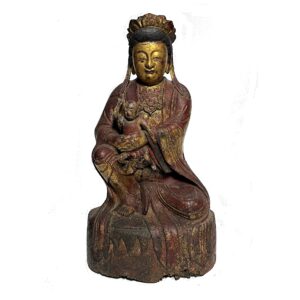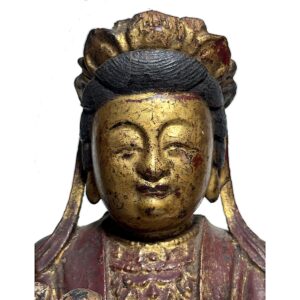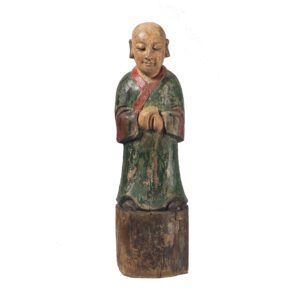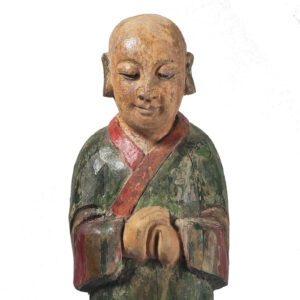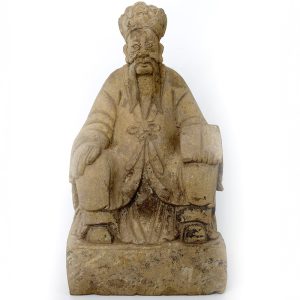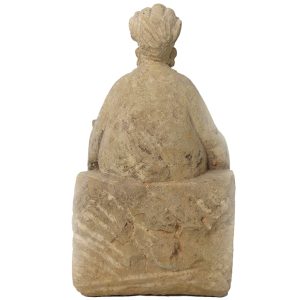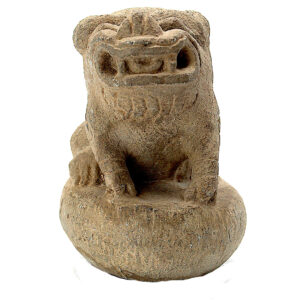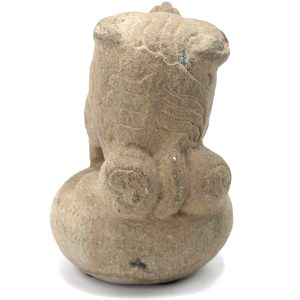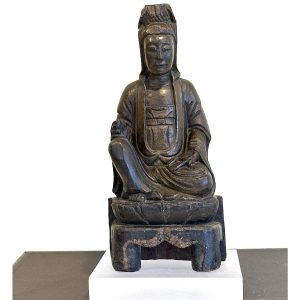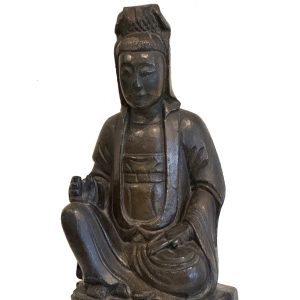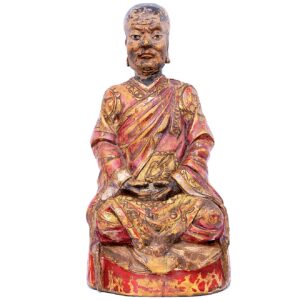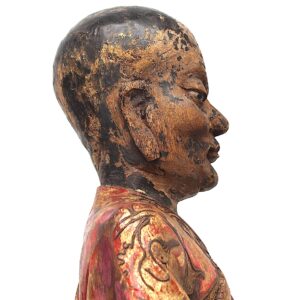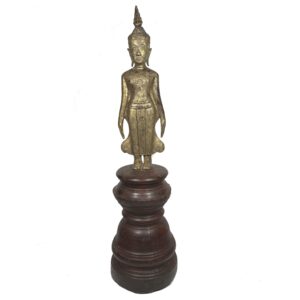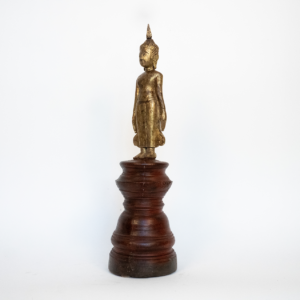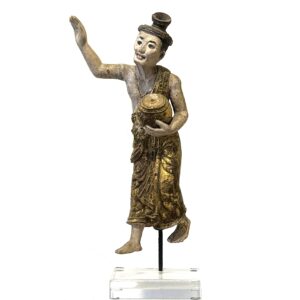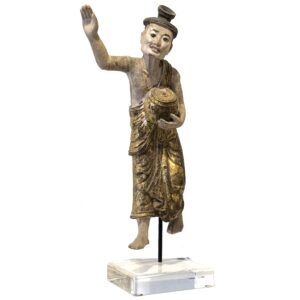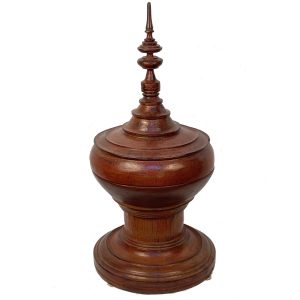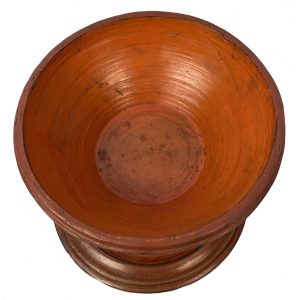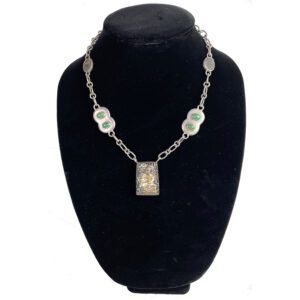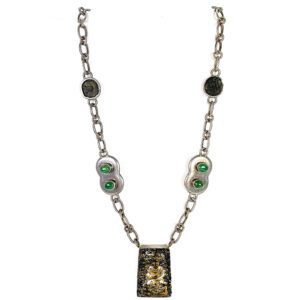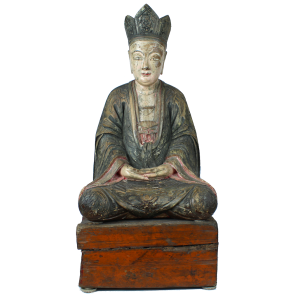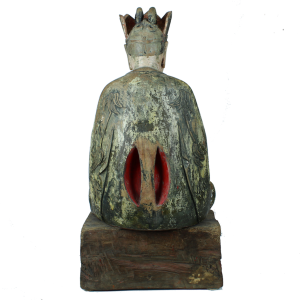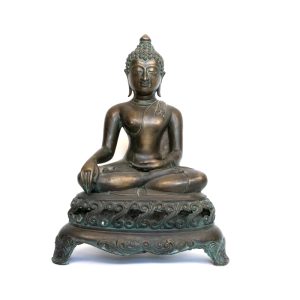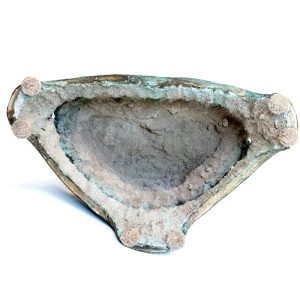Showing 49–60 of 98 results
-
Sale!


$2,650.00 Original price was: $2,650.00.$1,975.00Current price is: $1,975.00.
H: 14.5” W: 8.25” D: 5” | CALL 213-568-3030 OR EMAIL [email protected] FOR SHIPPING.
Rare and beautiful provincial Songzi Guanyin is modest, compassionate and humble with lotus leaf crown, unadorned robe and pedestal with simple leaves. Her baby resembles the infant Buddha. Was probably on a home altar of wealthy couple desiring a (male) baby.
-
Sale!


$1,850.00 Original price was: $1,850.00.$1,450.00Current price is: $1,450.00.
H: 27.5” W: 8.5” D: 6.5” | CALL 213-568-3030 OR EMAIL [email protected] FOR SHIPPING.
inspirational, serene monk with realistic youthful smiling face on tall pedestal symbolizing his spiritual significance. Size, pose and consecration suggest was in spiritual space in a home or community shrine. His serenity and grace transforms environment around him.
-
Sale!


$725.00 Original price was: $725.00.$675.00Current price is: $675.00.
H: 8” W: 5” D4” | FREE SHIPPING within continental us
Wonderfully aged and weathered stone Tudi Gong reflecting many traits of this beloved Earth God holding a tael for wealth and fortune. He sat happily on an outdoor shrine, and would be happy to sit in a garden to bring an aura of past times to a new family.
-
Sale!


$195.00 Original price was: $195.00.$155.00Current price is: $155.00.
H: 4.5″ Dia: 3.25″ | FREE SHIPPING WITHIN CONTINENTAL U.S.
This stone flu lion is not an elegant protective beast, it’s just a friendly pet hanging out. He probably lived in a garden and is looking for another one with people like old wonderful pieces to remind them not to take themselves too seriously.
-
Sale!


$785.00 Original price was: $785.00.$625.00Current price is: $625.00.
H: 10.75″ W: 5.5″ D: 4.5″ | FREE SHIPPING IN CONTINENTAL U.S.
White clad Guanyin in royal ease and karana mudra to expel evil, remove problems and rid sickness or other negativities rarely used for Guanyin. Consecrated for home altar use.
-


$785.00
18 original Lohans were the major disciples of Shakyamuni Buddha whom he, at his death bed, entrusted to protect and promulgate Buddhist teachings. Over centuries, their numbers increased to over 500 enlightened beings recognized for their courage and supernatural powers. In Mahayana Buddhism, Lohans represent the ideal toward which Buddhist devotees should strive as they…
-


$1,575.00
H: 24.5” Dia: 7″ | CALL 213-568-3030 FOR SHIPPING quote or email [email protected]
Lao carved Buddha statues are renowned for their delicacy and refinement. This elegant antique Buddha is depicted in the “Calling for Rain” mudra found only in Laos with his half-closed gazing downward in meditation, elegant gestures, lyrical flaring robes and graceful curves of the body reflecting the Buddha’s gentleness. The curvature, proportions and oversized head indicate the perfection, wisdom and compassion of the “Enlightened One. He stands on a multi-tiered circular and waisted base. Carved Laotian images as old and elegant as this are rare.
-
Sale!


$1,175.00 Original price was: $1,175.00.$975.00Current price is: $975.00.
H: 22″ W: 8.5″ D: 6.5″ | CALL 213-568-3030 OR EMAIL [email protected] FOR SHIPPING.
Lyrical wood provincial Burmese male dancer with drum in gilded Burmese sarong with glass and sequins. Set high on a transparent Lucite base, he appears to float in motion.
-
Sale!


$725.00 Original price was: $725.00.$525.00Current price is: $525.00.
H: 26″ Dia: 12.5″|CALL 213-568-3030 OR EMAIL [email protected] for shipping.
This elegant early 20th century red lacquer hsun-ok has a simple striking silhouette with raised circular layers on a pedestal base and woven vertical bands topped by a tall round finial resembling a Buddhist stupa.
-
Sale!


$775.00 Original price was: $775.00.$675.00Current price is: $675.00.
CHAIN 18” | FREE SHIPPING within continental U.S.
Barry Brinker necklace – Thai ceramic Vairocana Buddha pendant with gold leaf and glass beads, Sri Lankan cabochon emeralds and ancient Roman coins. 18″ rolo style 950 German sterling silver chain.
-
Sale!


$4,450.00 Original price was: $4,450.00.$3,500.00Current price is: $3,500.00.
Ht: 27.5” W:13.5: D: 10.25” | CALL 213-568-3030 FOR SHIPPING QUOTE OR EMAIL US AT [email protected]
Magnificent example of fine provincial Buddhist statues. Made to be seen in the round, her garment has delicate incised leaves and leaf motifs on front, back, and sleeves. High pointed crown with the Five Tantric Dhyani Buddhas, rare in provincial Guanyins.
-
Sale!


$395.00 Original price was: $395.00.$295.00Current price is: $295.00.
H: 21” W: 15.5 ” D: 9.5” | CALL 213-568-3030 FOR SHIPPING
Thai bronze Lopburi style Buddha in Earth Witnessing position on decorative pierced throne on 3 footed curved base wearing simple 2-part Theravada Buddhist monk’s robe showing his modest religious devotion. Heavy statue filled with cement binder.
End of content
End of content

